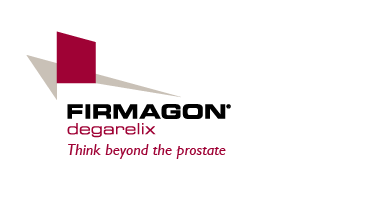

FIRMAGON® treating beyond the prostate
Learn more about how Firmagon can help benefit patients with CVD risk1-6
CVD is the leading cause of death in prostate cancer patients, after prostate cancer itself7,8




LHRH agonists are associated with a significantly increased risk of CV events vs. no treatment9

Diabetes
(HR: 1.44, 95% CI: 1.34–1.55, p<0.001)

Coronary heart disease
(HR: 1.16, 95% CI: 1.10–1.21, p<0.001)

Myocardial infarction
(HR: 1.11, 95% CI: 1.01–1.21, p=0.03)

Sudden cardiac death
(HR: 1.16, 95% CI: 1.05–1.27, p=0.004)
FIRMAGON® significantly lowers the risk of CV events vs. LHRH agonists1-6
NTT=122
And in a real-world study in the UK, what do you think the number needed to treat is for FIRMAGON®?









NTT=91†
* LHRH agonists refers to pooled data of patients receiving leuprorelin, goserelin and triptorelin.
† Calculated by Ferring using relative and absolute risk reduction.
References
1. Davey P and Kirby M. J Urol 2020;203(4S):e250–e251.
2. Albertsen PC, et al. Eur Urol 2014;65:565–573.
3. Perrone V, et al. Ther Clin Risk Manag 2020;16:393-401.
4. Cone EB, et al. J Clin Oncol 2020;38:6 Suppl 34.
5. Margel D, et al. J Urol 2019; 202(6): 1199-1208.
6. Zhang K W, et al. J Urol 2021; 206(3): 613-622.
7. Plummer C, et al. Trends Urol Men’s Health 2017;13–18.
8. Chowdhury S, et al. BJU Int 2013;112(2):182-9.
9. Keating NL, et al. J Clin Oncol 2006;24:4448–4456.


